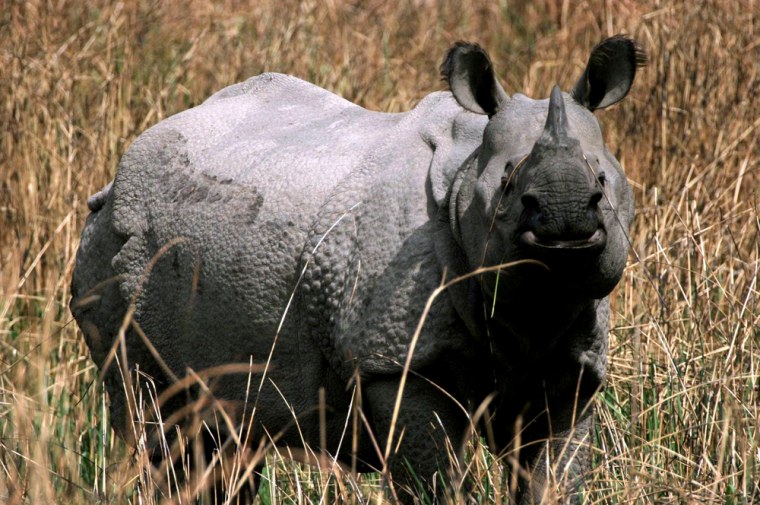Wildlife authorities in Nepal are concerned about a spike in poaching of an endangered species of rhinoceros after four of the animals were killed in the past two weeks in the country’s biggest wildlife reserve.
Officials said they had arrested three women for the latest killings, the first time women had been accused of direct involvement in poaching.
Rhino horns fetches up to $10,000 per kilo, about 2.2 pounds, on the international market, experts say. Poachers also sell rhino horns, hooves and other body parts for traditional medicines.
Demand from China for rhino horns, which are sold for alleged aphrodisiac qualities, has fuelled the resurgence of poaching. A security vacuum created by Nepal’s long Maoist insurgency has created the opportunity.
Last year, a census showed the population of Indian Rhinoceros, also known as the Great One-horned Rhinoceros, in Chitwan National Park had fallen to just 372, its lowest level in 10 years, down from 544 in 2000.
Poachers appear to have whittled that number down even further with at least five more rhinos killed in July.
“It is very serious and a matter of great concern,” said Gopal Upadhyay, chief warden of the park on Nepal’s southern plains, which is home to the largest number of the animals outside India. “We are very much on full alert.”
Laxmi Prasad Manandhar, a senior official at the Department of National Park and Wildlife Conservation, said poaching was the chief reason for rhino deaths.
The closure of smaller security posts in the park, and their merger with bigger posts — because of a threat from Maoist insurgents — had made it more difficult to police the park.
Maoist rebels had made poorly equipped small posts a major target of their decade-long insurgency to overthrow the monarchy.
But conditions had improved since the Maoists declared a ceasefire in April and opened peace talks with the government.
“We have already restored five security posts and more are being set up,” Upadhyay said. “We are also trying to get more involvement of the local community in anti-poaching drives.
Nepal began its rhino conservation drive 30 years ago when the population in the Himalayan nation fell to just 108 animals from around 800 in 1950. Anyone found guilty of poaching can be jailed for up to 15 years.
Thousands of tourists visit Chitwan every year, with the Indian rhinos the star attraction.
Their only other home is in India’s northeastern state of Assam, most in the Kaziranga National Park. There were more than 1,800 animals there at last count.
